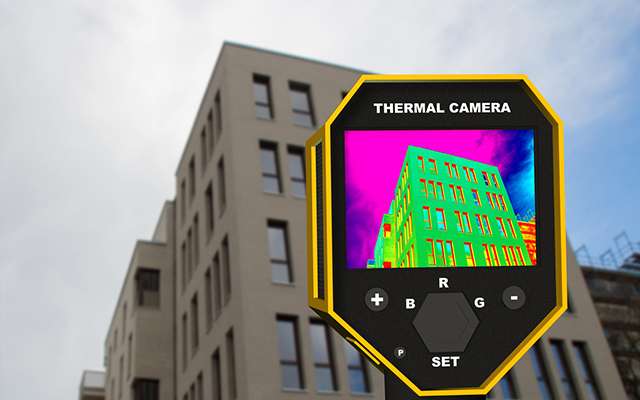Whether you know it or not, any residential or commercial building you own has what is called a “building envelope.” Your building’s envelope is a critical part of its construction, and it plays a big part in how the interior of your property interacts with the outside world. Below, we’re going to cover exactly what a building envelope is and why envelope testing is critical to maintaining a safe and healthy building.
What is a Building Envelope?
A building envelope is an umbrella term used to describe all of the parts of your building that keep it protected from the elements and the outside environment. This includes your roof, exterior walls, insulation, windows, doors, foundation, and any other barrier that keeps out water or helps keep your interior warm or cool depending on the temperature outside.
What is Infrared Building Envelope Testing?
Because this envelope encompasses so many different pieces that all work together to create a comfortable and protected interior, proper testing can determine any leaks or weak points in your building envelope. The most effective testing is done with infrared, as this technology can make any leaks visually apparent.
When your building is properly sealed, infrared testing will only show very little transfer of heat between your interior and the outside world. Leaks or weak points will allow a greater rate of transfer, and infrared testing picks up these temperature variances easily, regardless of size.
What Does it Test for?
Infrared envelope testing is versatile enough to test for leaks in any part of your building. It will show drafts coming in or going out of doors or windows, and it can detect temperature changes through the roofing, exterior walls, water-proof membranes, and even foundation walls.
How Does an Envelope Break?
A building envelope can have leaks or weak areas upon installation if insulating materials aren’t used properly. However, even if they are installed properly, the building material can degrade over time and lead to broken envelopes.
Insulation can lose its ability to block heat transfer. Roofing materials and exterior walls can become damaged through exposure to the elements. Concrete and wood can settle and crack over time. All of these, together or individually, leaves you with a broken building envelope.
What Happens if You Do Not Test?
There is a myriad of downsides to avoiding building envelope testing. It’s possible that your building materials can degrade through exposure to the outside world, and this can lead to water leaks through your roof, foundation, or exterior walls, potentially causing major damage to the interior.
Degradation of material or gaps developing between building materials can cause loss of seal and lead to significantly higher energy bills to combat the varying temperatures in your building. Additionally, leaks of hot or cold air in or out of your building can lead to moisture build-up and eventually mold formation.
To avoid potential damage to your building that can be very costly to repair, and to make your building more efficient and cheaper to heat and cool, contact one of our highly trained, building envelope experts about scheduling a professional building envelope test today.

